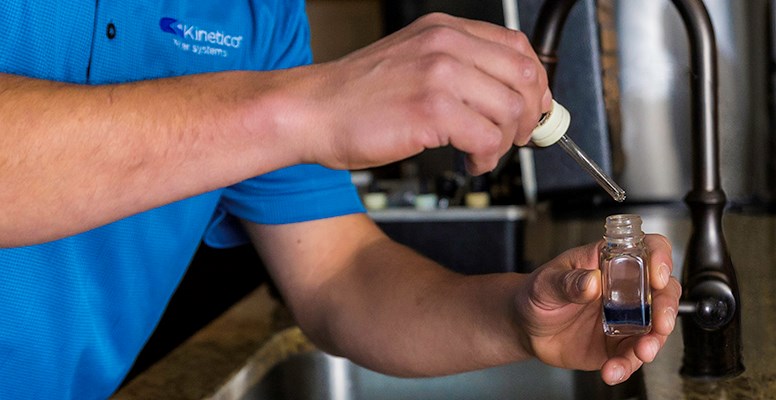How To Protect Yourself From Lead In Water
What Is Lead?
Lead is a naturally occurring metal that is found both in our environment and in man-made materials such as lead-based paint, batteries, ammunition, pipes, and solder. Many years ago, higher levels of lead were found in products such as paint, gas, solder, and ceramics. Due to health concerns relating to lead poisoning, levels in these types of products were reduced and restrictions were put into place. It has been shown that by reducing the lead levels in these items, the levels in our blood have also decreased. Lead can also end up in our water supply through old pipes and plumbing materials that contain lead and industrial pollution. This makes it important to ensure our drinking water is free from lead contamination.

Lead In Your Water
In recent years, conversations about lead-contaminated water have become more frequent, especially with high-profile cases like Flint, Michigan, and Newark, New Jersey, highlighting the urgent need for safer water.
As water travels to your home, it can interact with the plumbing materials used in pipes and faucets. These interactions can cause chemical reactions that corrode metal pipes, fixtures, and joining agents (solder), introducing metals, including lead, into the water supply. This issue is particularly common in older pipes that have aged over time. In some cases, homes may have lead pipes, as seen in Flint, Michigan, where corrosive water caused lead to leach from pipes and solder into the drinking water.
According to the CDC, lead rarely occurs naturally in water; it is typically introduced through the water delivery system. However, well water may still contain lead, especially from older wells with lead components in the packer element or submersible pumps. Once water reaches your home, whether from a city supply or a well, it can be affected by pipes and fixtures that may contain lead, potentially leaching into the water.
Lead in drinking water has no taste or smell, making it difficult to detect contamination. It is crucial to assess your potential exposure to lead and take appropriate precautions. Testing your water and inspecting your home’s plumbing are essential steps in ensuring your water is safe. Test to see if you have a lead water line in your home by following these steps.
- Locate your water meter. (This can be inside or outside of your home)
- Locate the water line that goes into the water meter. (This will have a valve on it)
- If this water line is metal, scratch it slightly with a coin or a key. What color is it?
- Orange or copper: You likely have a copper water line.
- Silver or grey: Continue the follow these steps.
- Use a magnet on the pipe. Is it magnetic?
- Yes: You likely have a galvanized steel water line.
- No: Continue to the next step.
- Did it scratch easily?
- Yes, it was soft: You likely have a lead water line.
- No, it was hard: You may have a lead water line. Further confirmation will be needed.
Use this test on other pipes if you are unsure if you have lead pipes in your home.
If You Believe Your Water Has Elevated Levels Of Lead Or You Are Unsure

How To Reduce Lead Exposure
According to the EPA, city-supplied water can have lead levels up to 15 Parts Per Billion (ppb) before corrective action must be taken; but they also state that anything above zero ppb can be potentially hazardous, especially to children. If you believe that your child has had exposure to lead in drinking water, contact your healthcare provider who will help recommend further actions.
More recently, additional efforts have been made to further reduce the amount of lead found in pipes, with a pledge of over $3 billion put in place by the US Government at the beginning of May 2024. Tennessee, for example, will receive over $84 million to assist with replacing lead pipes, providing cleaner drinking water to hundreds of thousands of people who previously did not have access. Many other areas impacted by lead contamination will receive funding too, further reducing the overall amount of contaminants in water across the US.
If you do not have a water filtration system in your home, the CDC recommends to thoroughly flush your plumbing of water that has been sitting in the pipes. This can be done by running cold water for 1-2 minutes before use for drinking or cooking. Hot tap water can have higher amounts of lead.

How Can Kinetico Help With Lead In Water?
You can protect the water that you and your family drink at home by installing a water filtration device. Reverse Osmosis is one of the most effective ways to reduce lead in your water supply. Kinetico’s reverse osmosis systems, like the K5 Drinking Water Station, are third-party certified to significantly reduce lead in water at your home.

